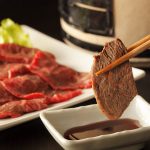Japanese cuisine is known for its emphasis on fresh, seasonal ingredients, presentation, and a balance of flavors. It encompasses a wide variety of dishes and culinary styles, each with unique characteristics and cultural significance. Here’s an overview of the main types of Japanese cuisine:
1. Washoku (Traditional Japanese Cuisine)
Washoku refers to the traditional Japanese culinary arts, characterized by its emphasis on seasonal ingredients and simple, natural flavors.
- Kaiseki: A multi-course meal that showcases the chef’s skills and seasonal ingredients. It’s considered the pinnacle of Japanese haute cuisine, with meticulous attention to presentation and balance.
- Shojin Ryori: A type of vegetarian cuisine associated with Buddhist monks. It avoids meat, fish, and strong flavors, focusing on vegetables, tofu, and other plant-based ingredients.
- Obanzai: A style of traditional home-cooked dishes from Kyoto, characterized by simplicity and use of local, seasonal ingredients.
2. Sushi
Sushi is a world-famous Japanese dish that primarily consists of vinegared rice accompanied by various toppings, most commonly raw fish.
- Nigiri: A small ball of sushi rice topped with a slice of fish or other ingredients.
- Sashimi: Thinly sliced raw fish or seafood, served without rice.
- Maki: Sushi rolls made by wrapping rice and fillings in nori (seaweed) and slicing them into pieces.
- Temaki: Hand-rolled sushi in the shape of a cone.
- Chirashi: A bowl of sushi rice topped with a variety of sashimi and other ingredients.
3. Noodles
Noodles are a staple in Japanese cuisine, with various types and preparations.
- Ramen: Wheat noodles served in a meat or fish-based broth, often flavored with soy sauce or miso. It can be topped with ingredients like sliced pork, nori, and green onions.
- Udon: Thick, wheat flour noodles often served in a mild broth. Udon can be enjoyed hot or cold and with various toppings, like tempura or beef.
- Soba: Buckwheat noodles served either hot in a broth or cold with a dipping sauce. They are popular in both everyday meals and special occasions.
- Somen: Thin, wheat noodles typically served cold with a dipping sauce, especially popular in summer.
4. Rice Dishes
Rice is a central component of Japanese cuisine, used in various dishes.
- Donburi: A bowl of rice topped with various ingredients, such as beef (gyudon), chicken and egg (oyakodon), or tempura (tendon).
- Onigiri: Rice balls often filled with ingredients like pickled plum (umeboshi), salmon, or bonito flakes, and wrapped in nori.
- Katsudon: A donburi dish featuring a breaded and fried pork cutlet with egg on rice.
5. Tempura
Tempura consists of seafood, vegetables, or other ingredients dipped in a light batter and deep-fried. It’s known for its delicate, crispy texture and is often served with a dipping sauce.
6. Yakitori
Yakitori refers to skewered and grilled chicken, often served with a variety of seasonings and sauces. It includes different parts of the chicken, such as thighs, wings, and even internal organs.
7. Okonomiyaki
A savory pancake made with a batter of flour, eggs, shredded cabbage, and other ingredients like meat, seafood, or cheese. It’s topped with okonomiyaki sauce, mayonnaise, bonito flakes, and seaweed.
8. Takoyaki
Ball-shaped snacks made of a wheat flour-based batter filled with octopus, tempura scraps, pickled ginger, and green onions, cooked in a special takoyaki pan.
9. Sukiyaki and Shabu-Shabu
Both are Japanese hot pot dishes, but they differ in preparation and ingredients.
- Sukiyaki: Thinly sliced beef cooked in a shallow iron pot with vegetables, tofu, and a sweet soy-based broth. It’s often dipped in raw egg before eating.
- Shabu-Shabu: Thinly sliced meat and vegetables cooked piece by piece by the diner in a pot of boiling water, then dipped in various sauces before eating.
10. Nabe (Hot Pot)
Nabe is a category of hot pot dishes cooked at the table, featuring various meats, vegetables, tofu, and noodles in a flavorful broth. It’s a popular winter dish.
- Chanko Nabe: A hearty stew traditionally eaten by sumo wrestlers, containing meat, seafood, and vegetables.
- Yosenabe: A hot pot with a variety of ingredients, often flavored with miso or soy sauce.
11. Japanese Sweets (Wagashi)
Traditional Japanese sweets are often enjoyed with tea and are known for their subtle sweetness and artistic presentation.
- Mochi: Sticky rice cakes that come in various forms and flavors, such as daifuku (mochi filled with sweet red bean paste) and dango (rice flour dumplings).
- Dorayaki: A dessert consisting of two small pancakes with a filling of sweet azuki bean paste.
- Taiyaki: Fish-shaped pastries filled with sweet fillings like red bean paste, custard, or chocolate.
12. Street Food
Japanese street food offers a variety of quick and tasty snacks, often found at festivals and markets.
- Yakisoba: Stir-fried noodles with vegetables and meat, flavored with a savory sauce.
- Taiyaki: As mentioned, fish-shaped pastries filled with sweet fillings.
- Korokke: Japanese croquettes made with mashed potatoes and minced meat, breaded and deep-fried.
13. Bento
Bento refers to a single-portion boxed meal, often consisting of rice, fish or meat, pickled or cooked vegetables, and other accompaniments. Bentos are popular for lunch and are available in many forms, from simple homemade versions to elaborate ones sold in stores and train stations.
14. Fusion Cuisine
Modern Japanese cuisine often incorporates elements from other cultures, creating unique fusion dishes like:
- Katsu Curry: Japanese curry served with a breaded and fried pork or chicken cutlet.
- Japanese-Italian: Dishes like spaghetti with mentaiko (spicy cod roe) or Japanese-style pizza.
Each of these types of cuisine reflects Japan’s rich culinary history and regional diversity.


Leave a Reply